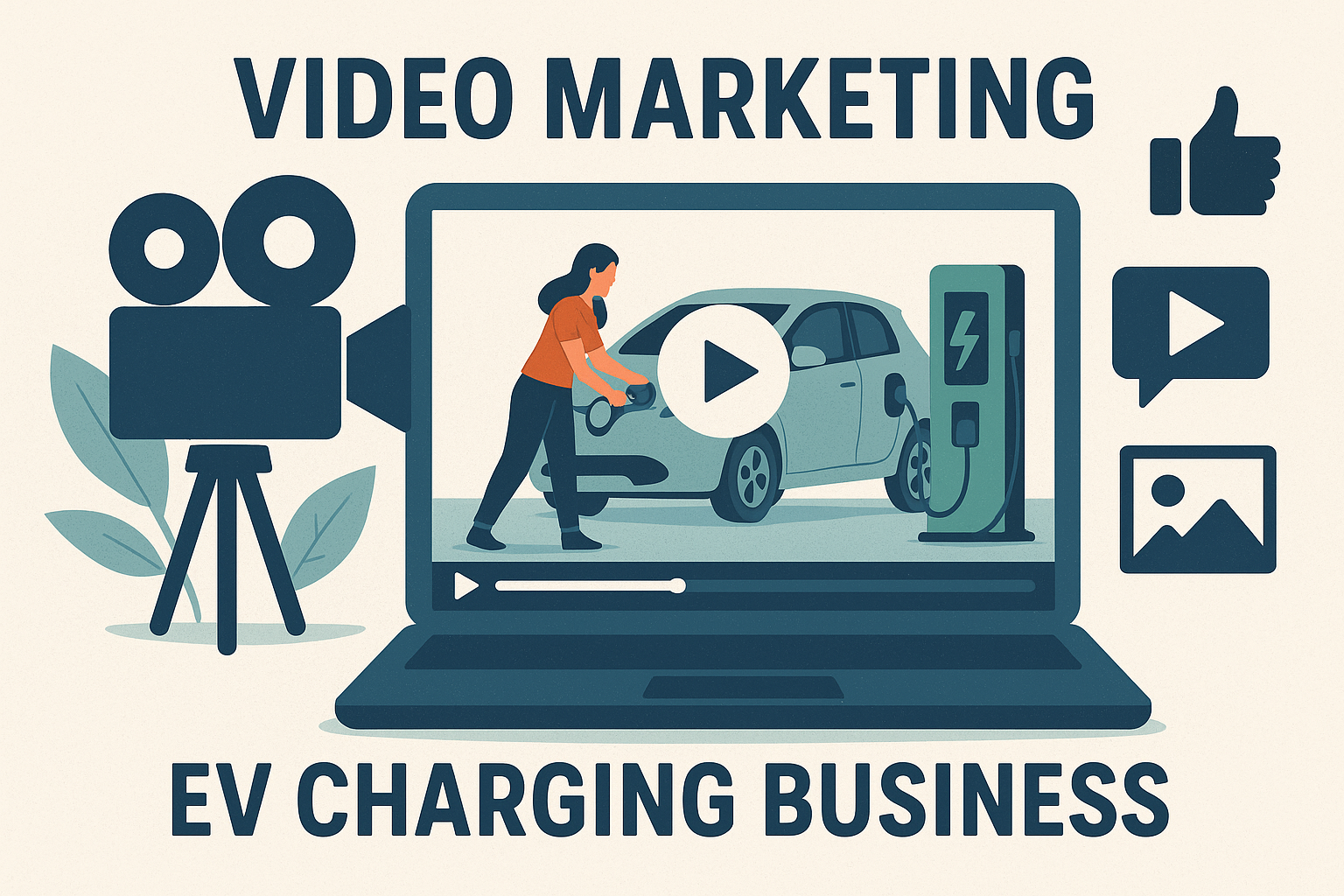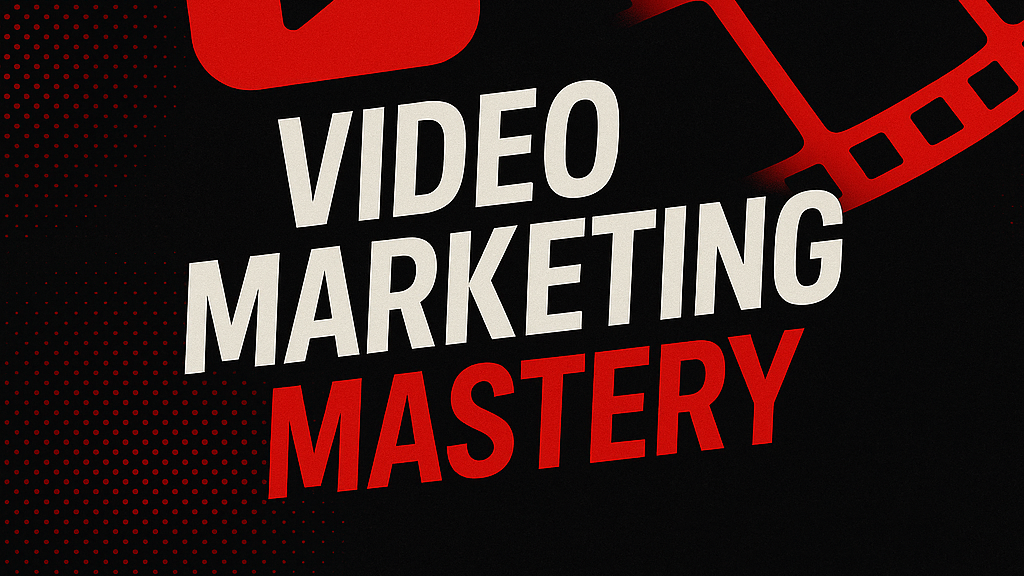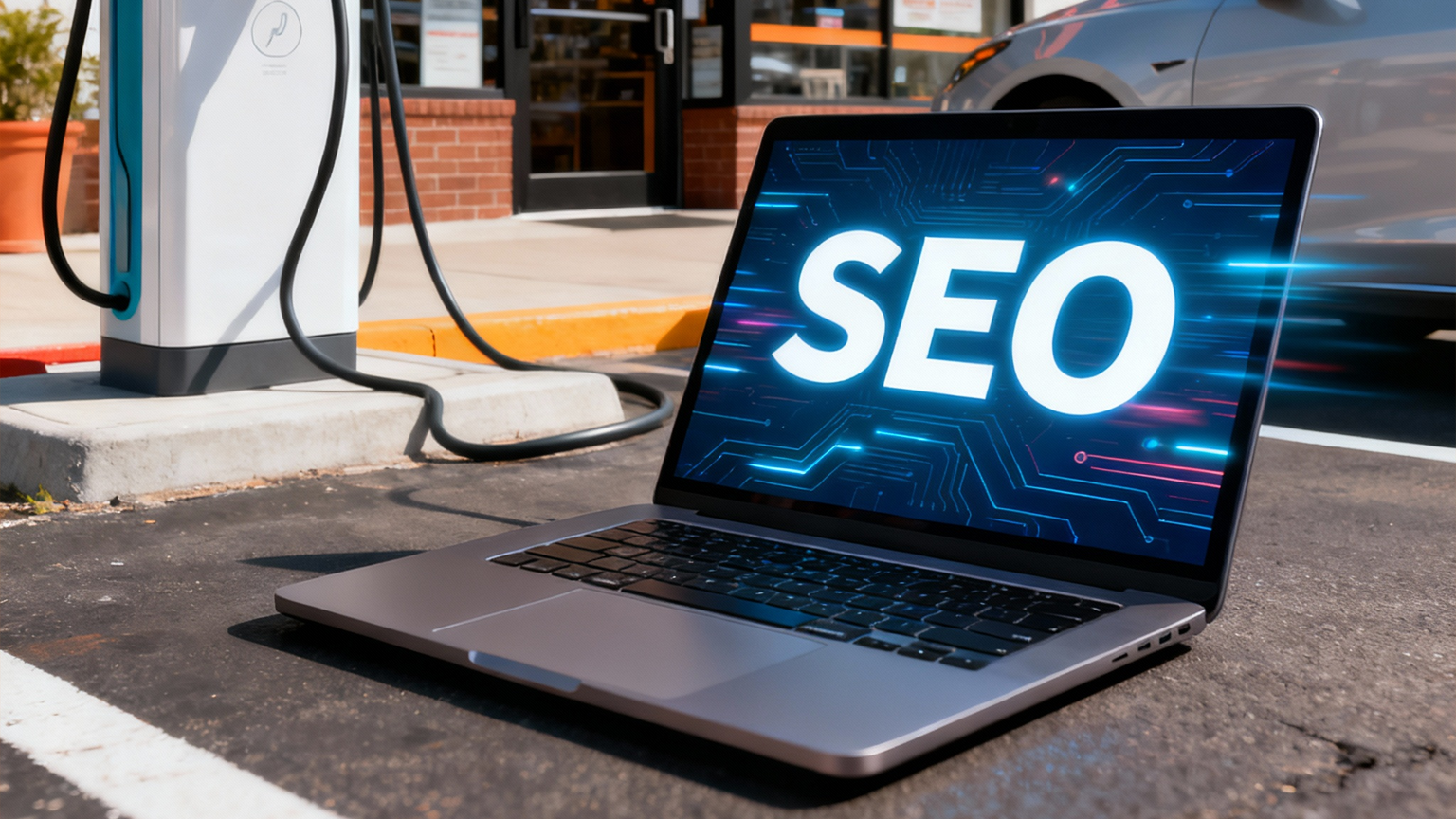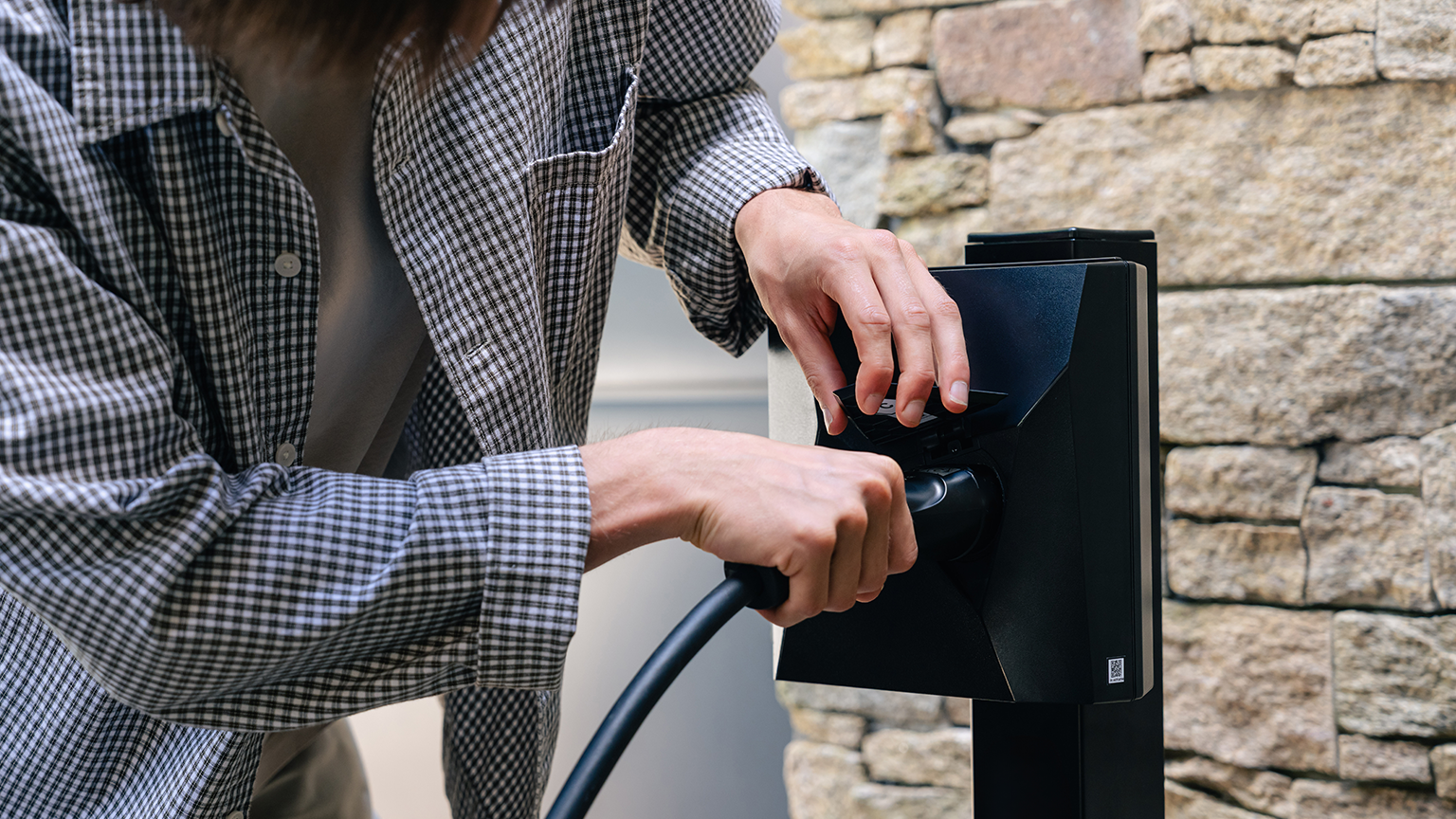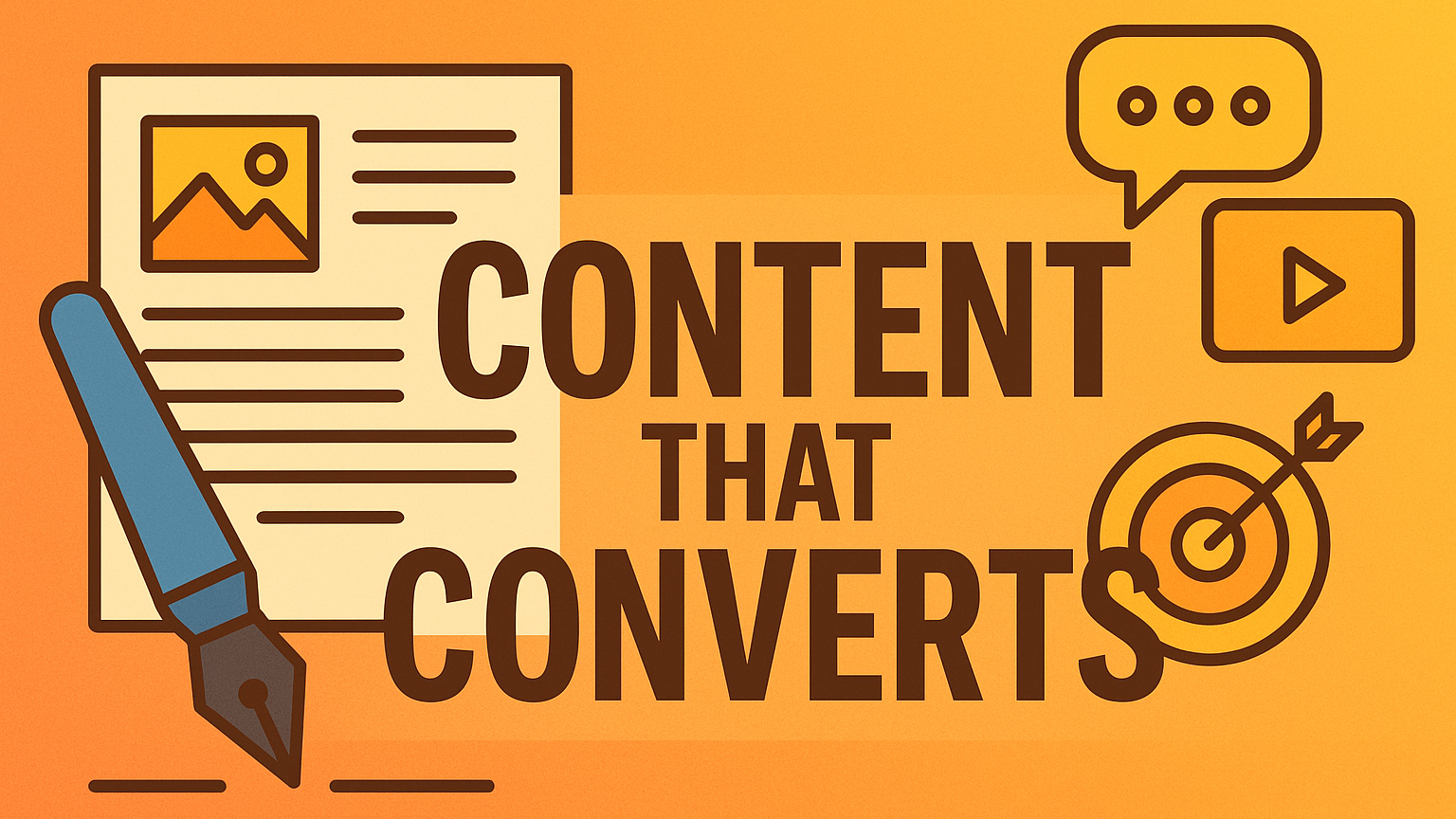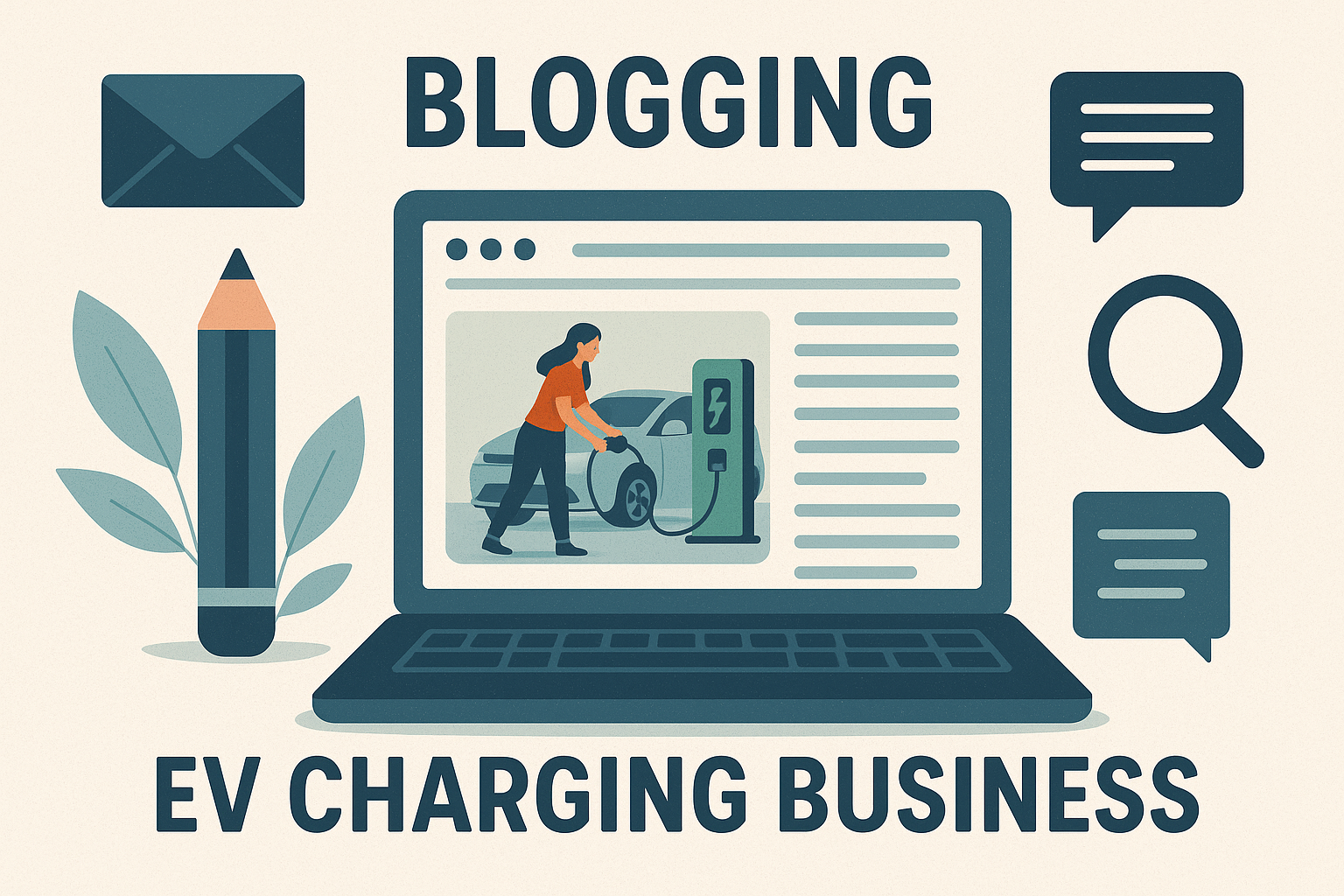Even though video marketing has been around for a good few decades now, it can still feel a bit daunting to use for your EV charging business.
Writing blog and social content is one thing, but producing professional-quality videos is a whole different ball game. And that’s not even thinking about narrating or presenting the videos yourself, which, as any seasoned YouTuber will tell you, brings about insecurities you never even knew you had.
The best way to get over the fear or uncertainty you might have regarding video marketing is through knowledge. It is, after all, much easier to fear what you don’t know. Understanding the hows and whats of video marketing will give you the confidence to take the next step, whether that’s recording your first video or contacting an expert to discuss your intentions.
Here, we’re breaking down exactly how to use video marketing to educate customers about EV charging and effectively sell your products. By the end, you should be well prepared to use this popular form of marketing for your own business in the EV niche.
Why Use Video Marketing for EV Charging Stations?
Before we look at how to use video marketing for your electric vehicle charging brand, let’s understand why you should bother with video in the first place.
You’ll already know that electric vehicle use in the UK is growing, with the market expected to reach US$41.1bn this year (2025). And as more people consider buying electric cars, the demand for clear, simple information on how to charge them is only going to increase.
Most drivers are using electric vehicles for the first time after years, even decades, of driving petrol or diesel models. So while they might be able to fuel up with their eyes shut, they’ll most likely be unsure about home chargers and public charging points.
This is where your business can make a difference with educational marketing content, and one of the fastest ways to deliver helpful, easy-to-understand content is with video. Rather than overwhelming your potential customers with pages of written instructions, you can share a short video that shows the process in action, making it super simple to understand.
Additionally, with video content, you can reach your customers on social apps they’re already using, like YouTube, Instagram, Facebook, and LinkedIn. We’ve seen a big shift towards short-form video content on social media in recent years, so sharing your own video content is giving users exactly what they want (and expect) to see.
What Types of Videos Can You Make?
So that’s how your EV charging brand can benefit from video—now what kind of content should you make? There are a few different approaches you can take here, depending on your goals and how you want to appeal to potential buyers.
Here are some ideas to get you started:
How-to-Videos
Given that many people considering EV adoption are unfamiliar with tasks like setting up a home charger, paying at a public charging point, choosing the right connector, and so on, you can serve as their go-to educational resource with how-to videos.
Commit to being the brand that offers simple step-by-step clips to answer your audience’s questions. You’ll start to be seen as a subject-matter expert on everything from the EV charging process to government incentives, which will help you boost awareness and trust with potential buyers over time.
Myth-Busting Videos
Myth-busting videos are another informative video style you can create that should entice your audience by addressing their common concerns.
You’ll know that a lot of new electric vehicle drivers have incorrect knowledge about what it’s like to own an EV, such as that charging takes hours or that public chargers are hard to come by. Range anxiety, or the worry that an EV won’t have enough charge to get from A to B, is another common one.
If you hear a lot of the same concerns from your customers, turn them into short videos that correct these myths, so you can help other potential buyers feel more confident about the EV market.
Product Demos
Finally, it’s also worth filming a few product demos to show how your chargers or services work. In these, you could walk viewers through the features of your chargers or look at different models and explain briefly how they compare.
This kind of video content is helpful if you sell home charging units or offer installation services for EV charging infrastructure. Don’t worry too much about boring your audience—if you’ve ever found yourself transfixed by cleaning or product assembly videos, you’ll know that they can be oddly relaxing as well as deeply informative.
How to Get Started With Electric Vehicle Video Marketing
You certainly don’t need expensive gear to start using video to educate your customers in the electric vehicle industry. Most modern smartphones have a decent enough camera quality to record on, and a stack of books or boxes does exactly the same job as a tripod.
That said, you might not want to bother with the hassle of writing scripts, filming, editing, and sharing your videos on your social media accounts. In that case, it’s worth looking at professional EV marketers who can do this for you.
We provide SEO and marketing services specifically for businesses in the EV market and can produce video content for your brand that appeals to the different buyer personas you’re targeting. Reach out for a chat here.
What Should You Include in Your Videos?
Given that your goal is to educate your customers on EV charging infrastructure, you want to focus your videos on solving a problem or answering a clear question.
The advantage of video is that you can physically show things while you’re explaining them. So, for instance, you could demonstrate how your products work in real settings. Filming yourself is better than using stock footage here, so your customers can understand exactly how your chargers work in a genuine home environment.
A couple of other must-includes for your videos are:
- Subtitles. A lot of people watch videos with the sound off, especially on social media.
- A clear call to action, like “visit our website to learn more” or “book your home charger installation”. This usually goes at the end, or in the middle if you’re filming a longer video.
How Can You Measure the Success of Your Videos?
When you post a video online, the platform you post it on will usually provide analytics that make it easy to measure its success.
For instance, YouTube and Facebook let you see how many people have viewed each video, as well as its watch time and click-through rates. You can even see how many people are still watching by the end—and if they stop watching halfway through, it’s a sign that you need to make your videos shorter or clearer.
You can also track how many people visit your website or contact you after seeing a video. Just remember to add links in your video descriptions that lead viewers to your booking page. Even better, create a dedicated landing page just for your video audience, so you can easily see which videos bring in new customers.
Need help understanding your video analytics, or just don’t want to spend time figuring it out yourself? Get in touch and let us do it for you. Contact us to book a strategy call here.
More on Using Video Marketing to Educate Customers About EV Charging: FAQ
If you have a few more questions about video marketing for your EV chargers, check out this section. We’ve shared our answers to common FAQs about EV video marketing.
What are the top tips for using video marketing for EV charging?
Our top three tips for using video marketing for your EV charging business are:
- Stay consistent (aim to post new, helpful content every week, even if it’s just a short video).
- Build on the success of earlier videos.
- Ask customers and colleagues for feedback, and improve based on their comments.
How should you plan video content for an electric vehicle charging company?
The best approach to planning content for videos in the EV automotive industry is to focus on responding to common questions your customers ask. For example, if you have a lot of people asking how long a single charge takes or wanting to know the difference between tethered and untethered chargers, you can create a short video addressing these questions. You also want to think about the customer’s journey and plan your videos to meet potential buyers at each stage of their journey, from research to purchase to use.
Where should you share your EV charging video content?
You should share video content about EV charging on wherever your audience spends the most time. Most consumers go to YouTube when they want detailed how-to guides or longer explainers, while they’re likely to mindlessly scroll on Instagram and Facebook, so these platforms are best for posting short, eye-catching clips, under a minute long. You can also create a video library on your EV charging product or service pages, offering value beyond a written blog.

